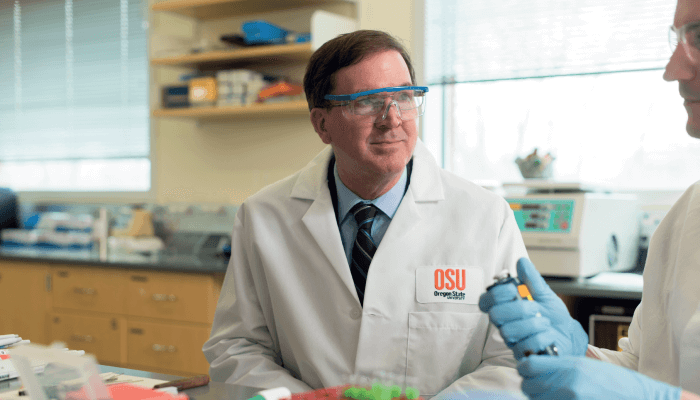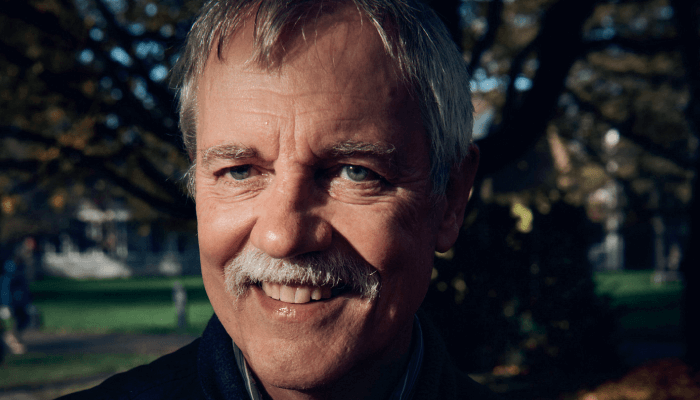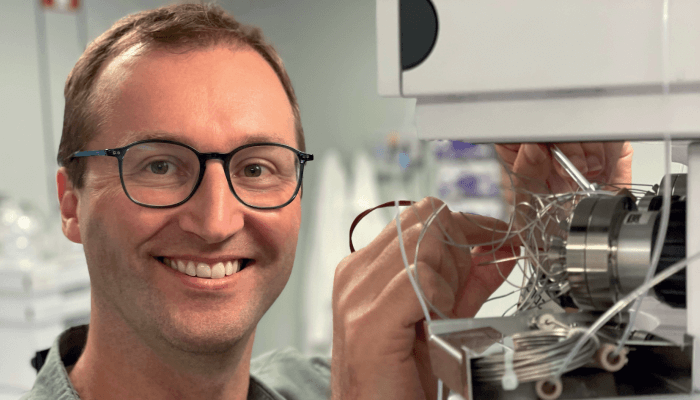Richard van Breemen: As a biomedical mass spectrometrist for 40 years, I have been fortunate to have had access to a wide variety of instruments including time-of-flight (ToF), ToF-ToF, ion trap, ion trap-ToF, quadrupole, quadrupole-ToF (Q-ToF), ion mobility Q-ToF, triple quadrupole, magnetic sector, FT-ICR, and orbitrap mass spectrometers. Every type of mass spectrometer has its strengths and weaknesses, and no one instrument has been able to address every analytical question. Therefore, necessity continues to drive innovation such that mass spectrometers of all types are becoming more widely applicable to diverse biomedical applications, while becoming more sensitive, more automated, and smaller.
Over the last 10 years, my research laboratory has relied primarily on two types of tandem mass spectrometers – triple quadrupole and Q-ToF instruments, both of which are fast and sensitive for biomedical applications. We use triple quadrupole mass spectrometers interfaced with UHPLC systems for quantitative analysis of small molecules, such as drugs, drug metabolites, natural products, and biomarkers. Equally important and essential to our natural products research as well as to our drug discovery and development effort has been the Q-ToF mass spectrometer interfaced with UHPLC, due to its high resolution and accurate mass capabilities.

Joseph Loo: I’ve been blessed to have access to a variety of different mass spectrometers, including Orbitraps, quadrupole time-of-flight with ion mobility, and Fourier transform ion cyclotron resonance instruments. To echo what Richard said, each has their strengths and weaknesses for the types of research projects they can address. Because my group is interested in a wide variety of areas, we like having all kinds of different instruments, and I feel that my students benefit from the variety of tools we have. But my favorite instrument was a magnetic sector-ion trap hybrid mass spectrometer with an electrospray ionization source we had when I worked in industry. It took forever to tune, and it required two separate data systems to operate it, but it was a joy to work with. You felt like you had total control of the ions as they traveled through the instrument. My students today would have hated it – slow, very little automation, and sometimes finicky. But I had fun!

Ruedi Aebersold: I’d say an ESI tandem mass spectrometer. Essentially all our work depended on these types of instruments – without them, proteomics as we know it today would not be possible. The progress in the performance of the instruments over the last couple of decades has been incredible. Today, even the protein contents of single cells can to some extent be analyzed. Some speculate that other powerful approaches will displace MS as the key technology in proteomics. I don’t think that this will happen anytime soon. For sure, some aspects of proteomics will be taken over by faster, simpler or cheaper techniques, which are now emerging. However, the incredible flexibility of MS to not only identify protein species but also determine their functional state, their interactions with other proteins or nucleic acids, or to indent the site and type of PTM’s will remain key tasks for MS.

Koen Sandra: Without a doubt, high resolution mass spectrometry. It is unbelievable how many analytical questions we have addressed and keep addressing every day using this technology. From the in-depth characterization of large and heterogeneous therapeutic proteins like antibody-drug-conjugates, to the untargeted discovery of blood plasma metabolite and lipid biomarkers for the early detection of various diseases, to the identification of small molecule impurities in food additives. The evolution these instruments have been through over the last 10 years is enormous. Resolution is one thing, although often overemphasized, but I’m especially fond of the advancements in sensitivity, robustness, and data handling capabilities. Despite the latter, my advice to all mass spec geeks out there: don’t forget to examine the data yourself; there is so much precious information to be found – and search algorithms won’t pick up everything.





